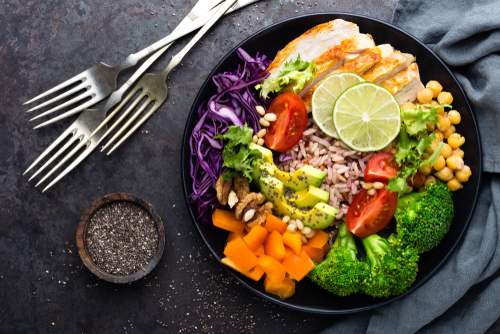
Do you ever wonder why a plain white bagel with 1.5 grams of fat and 250 calories is not considered to be a healthy snack alternative over 36 grams of almonds with 18 grams of fat and 210 calories? This is where the concept of nutritious food comes in. Here is a clear breakdown of what exactly is nutritious food according to experienced personal trainers.
The Context
Nutritious food is defined as food varieties that provide beneficial nutrients in the form of vitamins, major and trace minerals, essential amino acids, essential fatty acids, and dietary fibre and at the same time minimises potential harmful elements like antinutrients, quantities of saturated fats and sugars.
Your Nutritional Needs
Nutritious food in most cases cannot be generalised into a common theme. This is mainly because your nutrient requirements vary based on your gender, age, and other health conditions you may be experiencing. On the other hand, some vulnerable groups have special needs, which can make a given food nutritious for them while being potentially undesirable for others.
A personal trainer quotes an example for this target group nutrient classification as follows; a one-year-old infant needs more food that is energy-and nutrient-dense, while if an adult consumes the same food may receive excessive amounts of some micronutrients or an adolescent at risk of obesity.
Similarly, high energy density is of importance for individuals suffering from acute malnutrition, whereas low energy density may be preferable for overweight individuals
Typology Of Nutritious Food
- High inherent nutritional value
This category consists of micronutrients dietary fibre, high-quality protein, and/or essential fats of significant qualities. It has no major anti-nutritional or harmful qualities when consumed in recommended quantities. Some examples of this type of nutritious food include fruits and vegetables, legumes, nuts and seeds, unsweetened dairy products, eggs, fish and lean meats.
- Enhanced nutritional value
This category of nutritious food is believed to improve its nutritious value through the addition of nutrients i.e. fortification or by making changes to the processing procedures. They also don’t reflect any antinutritional or harmful qualities. Fortified staple grains and dietary fibre are the two best examples of this category of nutritious food.
- Some inherent nutritional value
This category includes food for which the potentially harmful elements have been minimised. Minimally sweetened dairy products, low-fat iv, sodium and minimally processed meat and low sugar fortified biscuits are some examples of food with some inherent nutritional value.
- Source of added nutrients
This includes food or any product that enhances the nutritional value of foods or diets to which they are added. Iodised salt, micronutrient powders, lipid-based nutrient supplements, and fortified cooking oil are some added sources of nutrients foods tend to have.
Usually, by eating a wide variety of food from each of the five food groups – whole grains, fruits and vegetables, protein, dairy, and fat and sugar, you will be able to get the required nutrients your body needs. However, analysing the proportion of each food type will depend on many factors including your daily calorie needs. This is why it’s always appropriate to seek professional consultation to understand what makes a nutritious diet for you either through a generalised or a gender-specific male or a female trainer – whichever works best for you.
Usually, by eating a wide variety of food from each of the five food groups – whole grains, fruits and vegetables, protein, dairy, and fat and sugar, you will be able to get the required nutrients your body needs. However, analysing the proportion of each food type will depend on many factors including your daily calorie needs. This is why it’s always appropriate to seek professional consultation to understand what makes a nutritious diet for you either through a generalised or a gender-specific male or a female trainer – whichever works best for you.




